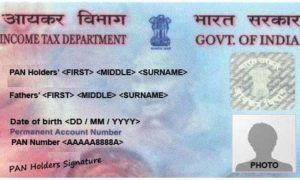The Income Tax Department makes changes in the ITR forms almost every year based on amendments made to the Income Tax Act. Like in previous years, the tax department has made some changes in various ITR forms for FY2023-24 seeking some additional details from taxpayers. One thing that remained unchanged is the applicability of forms for different taxpayers in this assessment year.
The Central Board of Direct Taxes (CBDT) has introduced many additional reporting requirements and modifications due to the Finance Act 2023 amendments.
The deadlines for filing tax returns are set for July 31, 2024. However, those taxpayers subject to income tax audits and with business income will be allowed to file returns using ITR-3 by October 31.
The tax department has seven distinct tax return forms – ITR-1, ITR-2, ITR-3, ITR-4, ITR-5, ITR-6, and ITR-7.
In two ITR forms, ITR-1 (SAHAJ) and ITR-4 (SUGAM), the deadline for filing tax returns is July 31, 2024, provided there is no extension granted. The notification for ITR-1 and ITR-4 for FY 2024–25 was issued on December 22, 2023.
Read More: Budget 2024: Govt Considers Rs 5 Lakh Tax Exemption Limit In New Regime, Says Report
What if you end up filing the wrong ITR form?
In case a taxpayer files a wrong tax return form or ITR, the Income Tax (I-T) Department allows the individual to file a revised return and there is no restriction as such how many times the person can file a revised return in a given fiscal year. But if the tax authorities come to a conclusion that the taxpayer has wilfully underreported or hid income and is involved in tax evasion, the income tax provisions say the penalty can be 100% to 300% of the tax amount due but not paid. In view of this and changes made to various ITR forms by the tax department, it is the responsibility of the taxpayer to know which ITR form is applicable to him or her.
Take a look at some of the key changes in various ITR forms, as follows:
Legal Entity Identifier requirement
ITR forms 2, 3, 5 and 6 will require a Legal Entity Identifier (LEI), a unique 20-character alpha-numeric code used to identify parties involved in financial transactions worldwide. Taxpayers must furnish their LEI when claiming a refund amounting to Rs 50 crore or more.
Read More: ITR Filing Guide: Know How To Download Interest Certificate From SBI, HDFC Bank, Others
Disclosure requirements for capital gains accounts scheme
Taxpayers using ITR forms 2, 3, 5 and 6 are required to furnish complete details of the capital gains account scheme, not just the deposited amount, as was the case with forms in the previous year. Under the revised Schedule CG, additional details are now required, including the date of deposit, account number, and IFSC code.
Contributions made to political parties
Contributions made to political parties must be disclosed in the new Schedule 80GGC, applicable to ITR forms 2, 3, 5 and 6) with the following details:
- Date of Contribution
- Contribution Amount (including breakdown of cash and other modes)
- Eligible Contribution Amount
- Transaction Reference Number for UPI transfer or Cheque Number/IMPS/NEFT/RTGS
- IFSC Code of the Bank.
Read More: Industry seeks removal of ‘Angel Tax’; to greatly aid capital formation, says CII
Deduction details for medical treatment
For claiming deductions related to maintenance and medical treatment expenses for a dependent with a disability, details must be provided separately in Schedule 80DD (and not under Schedule VI-A).
Required information includes:
- Nature of the disability
- Type of dependent (spouse, son, daughter, father, mother, brother, sister, or member of the HUF)
- PAN of the dependent
- Aadhaar number of the dependent
- Date of filing and acknowledgment number of Form 10-IA
- UDID Number.
Contribution to Agniveer Corpus Fund
Section 80CCH of the I-T Act was inserted via Finance Act 2023 which allows individuals filing returns (ITR forms 1, 2, 3, or 4) to claim deduction against the amount deposited in the Agniveer Corpus Fund. Accordingly, a column has been included in “PART C – DEDUCTIONS AND TAXABLE TOTAL INCOME” to furnish the amount eligible for deduction.





































